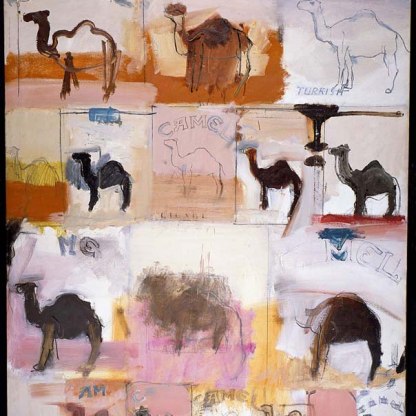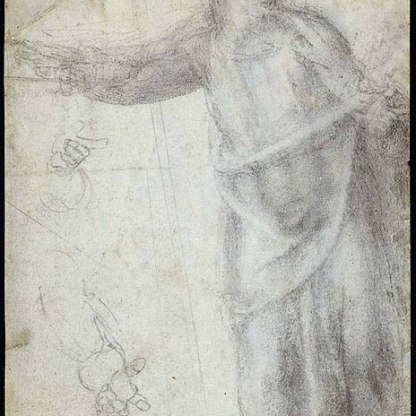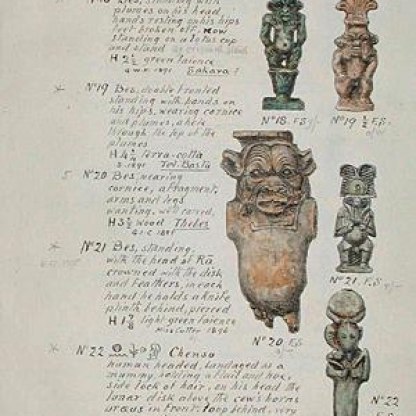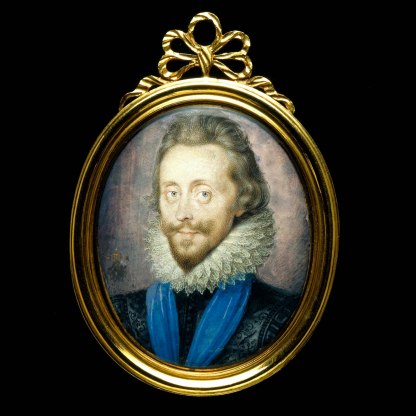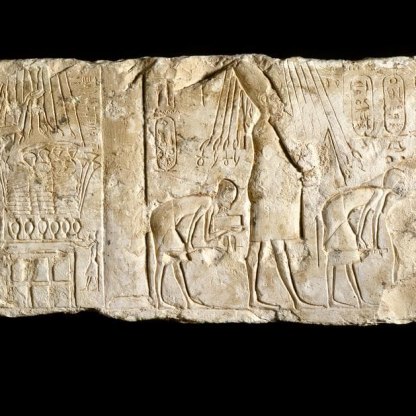John Disney
1779-1857
In 1850 John Disney gave the Fitzwilliam eighty-three pieces of sculpture, and it was this gift that formed the core of the Antiquities display in the newly built Museum.
Photograph of John Disney sent by him to the Vice-Chancellor and Synod of the Fitzwilliam Museum on 24 May 1856 as a frontispiece to the Museum Disneianum Disney had inherited most of these ‘antiquities’ (some are now known to be modern), which had been collected in the eighteenth century by the political radicals and reformers, Thomas Hollis and his friend Thomas Brand. While touring Europe 1748-9 they acquired objects to adorn Brand’s family home, the Hyde at Ingatestone in Essex. On the death of Hollis in 1774, Brand inherited his estate and changed his name to Brand Hollis. Brand Hollis became friends with John Disney’s father, the Reverend John Disney, through a shared interest in religious liberty and reform. When Brand Hollis died in 1804 he left his estate, which included the Hyde and its collection of ancient sculpture, to John Disney senior, together with land in Dorset. This is what John Disney junior inherited on the death of his father in 1816.
An engraving of The Hyde, Ingatestone from A catalogue of some marbles, bronzes, pictures, and gems, at the Hyde, near Ingatestone, Essex by John Disney senior (1809) John Disney junior was a barrister by profession, but he was also an antiquarian enthusiast. Born in 1779 and educated at home in London, at Cambridge and finally at the Inner Temple, he was called to the Bar in 1803. In 1807 he was appointed Recorder for Bridport, Dorset, where his family owned land, and in 1818 he became Sheriff of Dorset.
In 1818 Disney also began work on a catalogue of the antiquities he had recently inherited. This was not the first catalogue of the collection, his father had already written A Catalogue of Some Marbles, Bronzes, Pictures, and Gems, at the Hyde, near Ingatestone, Essex. However, this new catalogue was intended to be a more scholarly work, which drew on the knowledge of antiquities experts such as Taylor Combe, first keeper of the British Museum Antiquities department, and artists and sculptors such as John Flaxman and Sir Richard Westmacott. Disney himself also bought ten ‘antiquities’ to add to his collection, although only two of them are now believed to be ancient. His catalogue, Museum Disneianum, was finally published in 1846. Disney also developed an interest in local archaeology, helping to found the Chelmsford and Essex Museum and becoming the first president of the Essex Archaeological Society. In 1832 he was elected Fellow of Royal Society, sponsored by W M Leake, and in 1839 was made a fellow of the Society of Antiquarians.
Disney had a long connection with Cambridge. He was a student at Peterhouse in 1796, before the Fitzwilliam Museum, now a neighbour of Peterhouse, had been founded. In his later years he was a generous donor, not only to the Museum, but to the University. After leaving his collection of ancient sculptures to the Museum in 1850, he endowed the first professorship of archaeology in Great Britain, the Disney Chair in Archaeology, giving the University £1,000 in 1851 and leaving further funds on his death. In 1854 he was awarded the honorary degree of Doctor of Civil Law from Oxford and Doctor of Law (LLD) from Cambridge.
A selection of sculpture from the Disney collection is now on display in the Greek and Roman gallery Showcase 13.
Further reading
John Disney, Museum Disneianum (London, 1846).
C. Vout, ‘Treasure, not trash: the Disney sculpture and its place in the history of collecting’, Journal of the History of Collections 24(3) (2012) pp. 309-326 (online access here).
D.W.G. Gill, ‘Disney, John (1779-1857)’, Oxford Dictionary of National Biography (Oxford, 2004).
D.W.G. Gill, ‘Antiquities from the Grand Tour: the Disney collection at the Fitzwilliam Museum’, Cambridge 26 (1990) pp.34-37.
Other highlight objects you might like
Other pathways and stories you might like
Sign up to our emails
Be the first to hear about our news, exhibitions, events and more…


